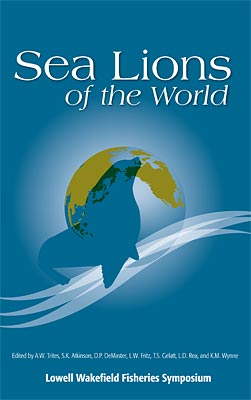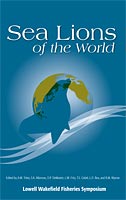
Klebsiella pneumoniae epidemics: Possible impact on New Zealand sea lion recruitment
I.S. Wilkinson, P.J. Duignan, A. Castinel, A. Grinberg, B.L. Chilvers, and B.C. Robertson
- Price: $1.60 Sale: $0.00
 This is part of Sea Lions of the World
This is part of Sea Lions of the World| Format | Price | |
|---|---|---|
| PDF download [247.2 KB] Bypass cart and download |
Free | Add to Cart |
Description
Epidemics among New Zealand sea lion pups in the 2001/02 and 2002/03 breeding seasons highlight the importance of examining the role of disease in the population dynamics of this threatened species. The pathogen implicated in both events was the gram negative bacterium Klebsiella pneumoniae. Isolates from both seasons were genetically indistinguishable, suggesting that the events were caused by a single introduction of an epidemic strain of the pathogen. The events were characterized by a sharp rise in pup mortality approximately three weeks after the start of the pupping season. On post mortem examination, affected pups had one or more of the following lesions: acute suppurative arthritis or polyarthritis, cellulitis, peritonitis, pleuritis, or meningitis. Adults were not apparently affected. Prior to the appearance of Klebsiella, mortality to mid January (~six weeks of age) among pups was 6.2%, with mortality by mid February (~10 weeks) 16.7%. Mean values for the years in which Klebsiella affected pup mortality were estimated at 18.5% (6 weeks) and 26.8% (10 weeks). The increase in mortality attributable to Klebsiella was 12.3% at 6 weeks and 10.1% at 10 weeks and the latter value was used in calculations to assess impacts on recruitment of females. Observed levels and temporal patterns of pup mortality in 2003/04 were consistent with those of pre-Klebsiella seasons. Using survival data from tagged fully mature cohorts, the reduction in the number of females recruiting to the adult population from epidemic years (2001/02 and 2002/03) was estimated. Between 42 and 72 fewer females from the 2001/02 cohort would reach age five, while between 47 and 80 fewer females from the 2002/03 cohort would reach age five. By 2007/08, when both the 2001/02 and 2002/03 cohorts would contribute significantly to the mature female population, between 93 and 144 fewer females would be present in the population. These missing females potentially represent between 2.3% and 4.6% of the adult female population.
Item details
- Item number: AK-SG-06-01z
- Year: 2006
- DOI: https://doi.org/10.4027/slw.2006.26



